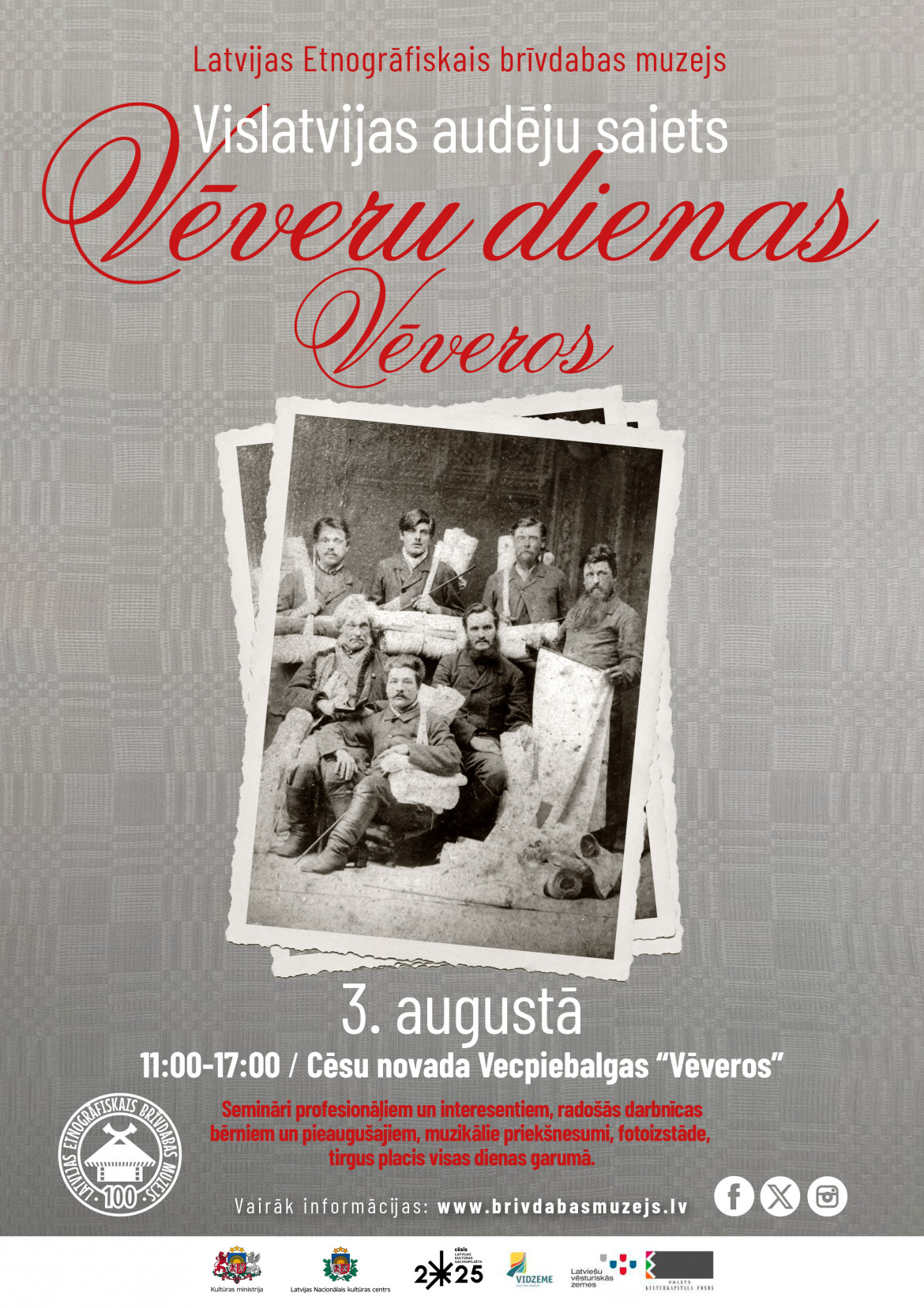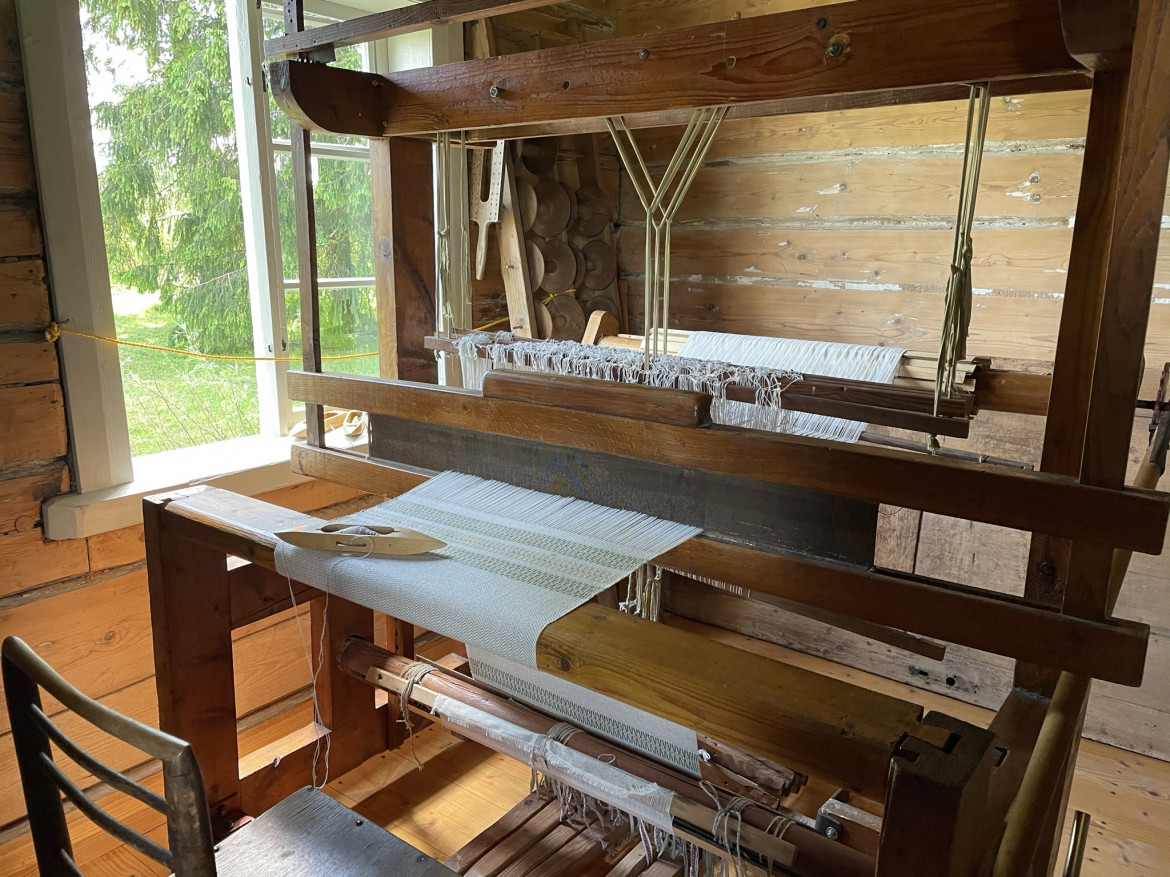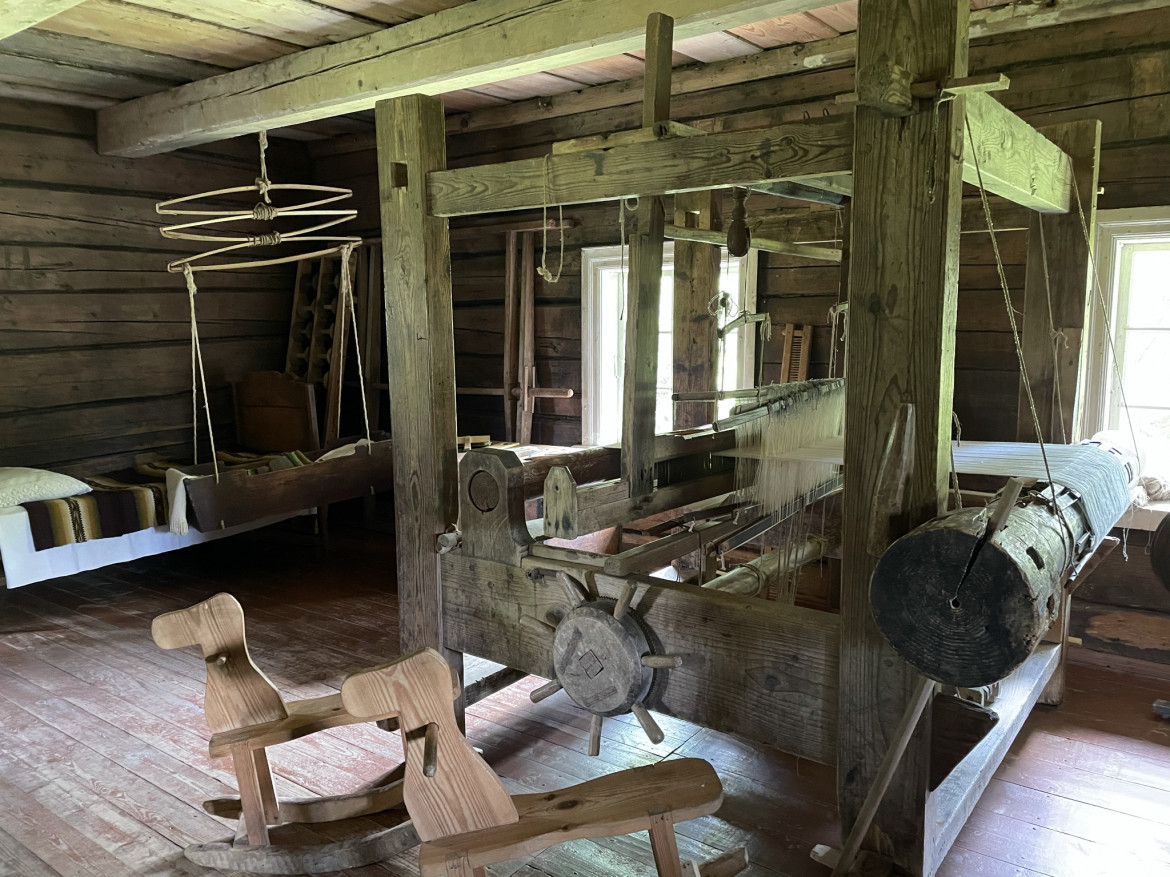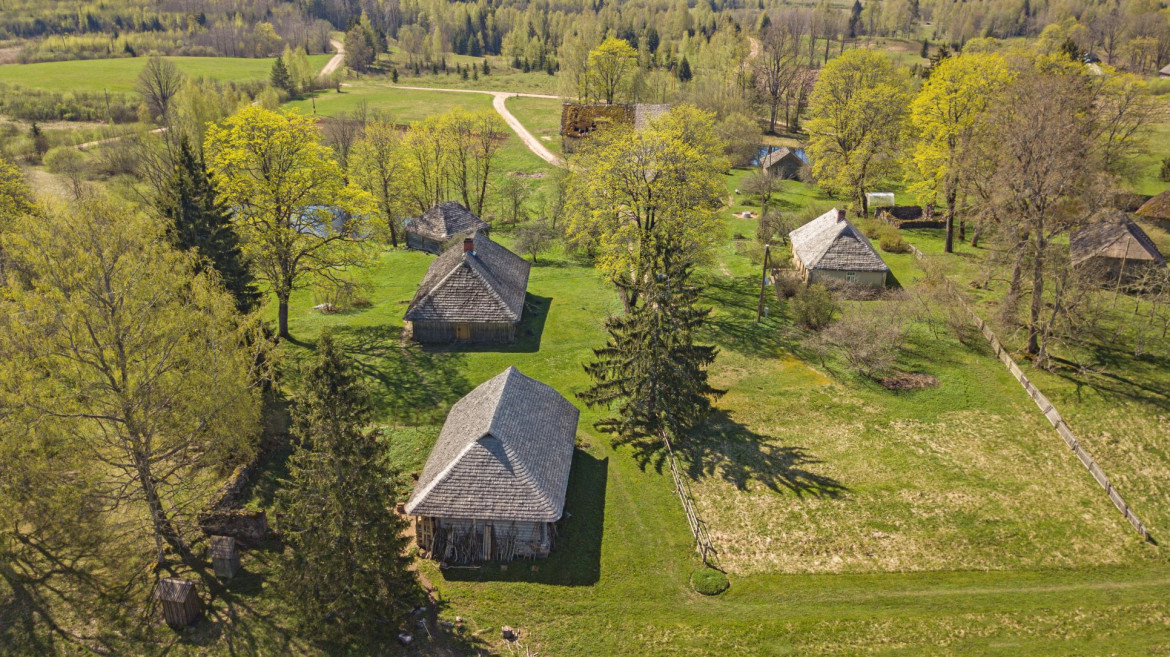Weaving Day at Vēveri 03.08.2024
On August 3rd, from 11:00 AM to 5:30 PM, the first All-Latvian Weavers' Gathering "Weaving Day at Vēveri" will take place at the rural exposition of the Latvian Ethnographic Open-Air Museum in Vecpiebalga, Cēsis Municipality, "Vēveri". Every weaver from Latvia is invited to participate in the festivities to jointly establish a new tradition – a weavers' festival. Everyone interested, as well as linen product enthusiasts, are welcome to spend an engaging time in an authentic environment, learning about ancient craft skills and enjoying beautiful linen designs.

This year marks the 100th anniversary of the founding of one of the oldest open-air museums in Europe – the Latvian Ethnographic Open-Air Museum, which has included the rural exposition "Vēveri" since the 1980s. ‘’Vēveri’’ preserves the 400-year-old cultural heritage of the Piebalga region. For centuries, farmers in Piebalga have mastered local crafts such as linen weaving, for which they are renowned and known in lands near and far. Their living environment can be seen at ‘’Vēveri,’’ where, you can view a broad exhibition of linen processing items, weaving tools ranging from spool frames to looms, various fabrics, and household items unfamiliar to modern people.
Weaving is one of the oldest branches of folk applied art worldwide. Rich information about the centuries-old fabric-making traditions has been preserved in folk memory, mythology, folk songs, as well as in 19th-century weavers' pattern books, ethnographic costumes, blankets, and fabrics. Interest in weaving has not faded away even today! Latvia has a strong weaving community, concentrated in more than 100 applied art studios, groups of like-minded people, and collectives ready to share their experiences and inspire others to inherit weaving skills and continue traditions.
On August 3. at ‘’Vēveri’’, special lectures will be given by Dr. Art. Aija Jansone, Head of the Ethnography Department of the Latvian Ethnographic Open-Air Museum; Dr. Hist. Anete Karlsone, Senior Researcher at the University of Latvia Institute of History; Ilze Mailīte, Head of SIA Mailīšu fabrika; and Zane Ulmane, Head of Carnikava TLMS Auseklītis. There will be a variety of creative workshops about and around weaving for both adults and children, a fashion show by the weaving workshop "Vēverīšas," and showcases by weaving groups and studios from the Cēsis Municipality. Attendees can join a creative walk with Piebalga craftswoman Inese Īris Liepiņa, enjoy beautiful dances performed by Vecpiebalga dancers, and sing along with Jaunpiebalga's mixed choir. Musical performances will be given by the band "Dzilna" and musicians from Drabeši Manor. Throughout the day, you’ll be able to see ‘’Vēverīšu’’ foto exhibition, a marketplace, and free guided tours of the "Vēveri" exposition with museum guides.
PROGRAM
11:00–11:45 Honoring of Weavers
11:45–12:30 Introductory lectures:
- Head of the Museum's Ethnography Department, Dr. Art. Aija Jansone, and textile collection keeper Aija Vītere "The Contribution of Piebalga Weavers to Latvia's Cultural History"
- Head of Carnikava TLMS "Auseklītis" Zane Ulmane, "Vidzemes Wool Weaving"
12:30–13:15 Showcase of Weaving by Vecpiebalga Dance Groups and Weaving Groups from Cēsis Municipality
13:15–14:00 Introductory lectures:
- Senior Researcher at the Institute of Latvian History at the Uiversity of Latvia Dr. hist. Anete Karlsone, "About and Around Dyeing and Coloring of Yarn"
- Head of SIA "Mailīšu Fabrika" Ilze Mailīte, "The Master of Looms Pēteris Viljums and the Demonstration of a Woven Shawl on Viljums' Loom"
14:00–15:00 Walk "See Colors in Nature!" "Vēveri" Painting Surroundings in Piebalga with Craftswoman Inese Īris Liepiņa
14:00–16:00 Special Activities for Weavers:
- Baking of Rye Bread, Butter Churning Together with Piebalga Craftsmen
- "Vēverīšas" Fashion Show and Presentation of Future Visions of the Weaving Festival
15:00–16:00 Guided Tours of "Vēveri" Exposition with Museum Specialists
16:00–17:00 Concert "Musical Weaving" and Joint Fun with the Mixed Choir "Jaunpiebalga," Musicians from Drabeši Manor, and the Band "Dzilna’’
11:00–17:00 Creative Workshops "Weaver's Items" – Weaving of Long Rag Rugs "It's Time to Start!" "How to Weave from Yarn to Scarf," Large Weaving Looms, Weaving Workshops, Belt Weaving, and Spinning and Weaving Master Classes with Museum Specialists
11:00; 12:00; 13:00 Guided Tours of "Vēveri" Exposition with Museum Specialists
11:00–16:00 Creative Workshops for Children "Creating Belts," "Designing Blankets" with Museum Pedagogues
11:00–17:00 Photo Exhibition ""Vēverīšas" Photo Stories" in the Barn "Vīroļi"
11:00–17:30 All-Day Fair

The rural exposition "Vēveri" of the museum has a history of at least 400 years. "Vēveri" translates from German as "weavers." "Vēveri" was first mentioned in documents by Swedish auditors in 1601 as a single farmstead. It was marked on a map at the end of the 18th century. During the long period of peace following the Great Northern War, the population grew. During "The Time of the Land Surveyors" in 1878, Piebalga residents bought the land from the manor as freehold property, at that time "Vēveri" already had eight homesteads. Gradually, the current arrangement and construction of the homesteads visible today developed. During the 1928 agricultural census, about 40 various buildings were recorded across the eight farms. To preserve the historically developed cultural landscape with its ancient homesteads, mills, buildings, roads, and tree plantings, as well as the buildings themselves – monuments to the work and life of Piebalga farmers – in the environment and place where they originated. Since the 1980s, "Vēveri" has been part of the rural exposition of the Latvian Ethnographic Open-Air Museum. The ethnographic building complex of "Vēveri" has been granted the status of a cultural monument of national importance, and it showcases several looms and various ethnographic items that tell the story of weaving traditions in Piebalga.
The All-Latvian Weavers' Gathering "Weaving Days at Vēveri" is organized in collaboration with the Latvian National Centre for Culture, and it is financially supported by the Ministry of Culture, the target program of the State Culture Capital Foundation "Development Program for the Historical Lands of Latvia," the Vidzeme Planning Region, and the Cēsis Municipality.

